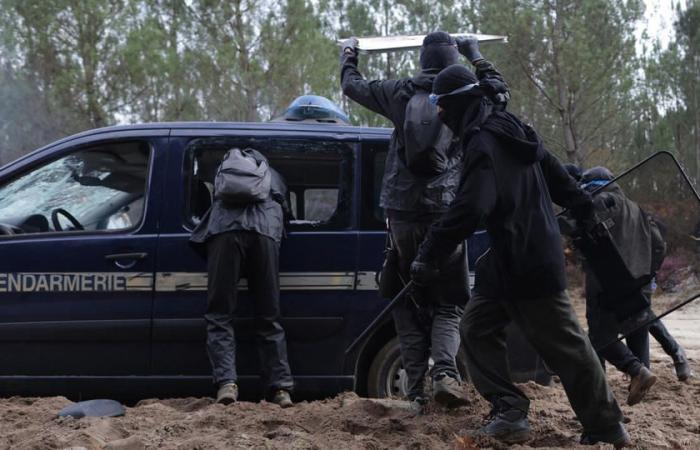Opponents of the future LGV in Gironde demonstrated this Saturday, October 24. Tensions arose, notably with a gendarmerie vehicle vandalized by hooded people.
Hundreds of demonstrators (between 800 and 1,000 people according to the gendarmes), including many members of the Earth Uprisings, gathered in Gironde this Saturday, October 12, 2024 to protest against the construction of the Bordeaux high-speed line (LGV). -Toulouse. This pharaonic project, contested and estimated at around 15 billion euros, arouses fierce opposition in New Aquitaine.
Opponents, who gathered in a camp near the Landes forest, denounce a useless and environmentally destructive project. They particularly fear the impacts on biodiversity, particularly in the Ciron valley, a Natura 2000 classified site. The demonstration quickly degenerated: a gendarmerie vehicle was damaged according to the prefecture of Nouvelle-Aquitaine and Gironde.
A mobilization below the authorities’ forecasts
To mark their opposition, the demonstrators organized games and erected a wooden tower, a symbol of their determination to monitor the progress of the project. The authorities, who had anticipated a larger mobilization, deployed a significant security system, including a helicopter. An investigation was opened following shooting at a gendarmes aircraft during a reconnaissance flight during the night.
If the LGV is supported by communities in Occitanie, it deeply divides in New Aquitaine. Local elected officials, residents and environmental associations are uniting to demand a moratorium or a local referendum. They denounce a costly project, which risks artificializing thousands of hectares and not responding to current environmental issues.
Opponents advocate a renovation of existing lines and the development of public transport. They believe that the LGV is a project from another age, which will not solve mobility problems and which will increase the debt of local authorities. They advocate a renovation of existing lines to develop “everyday trains” and criticize the imposition of a special tax on more than 2,300 municipalities, close to the route, for this “pharaonic” project co-financed by the State, local authorities and the European Union.







